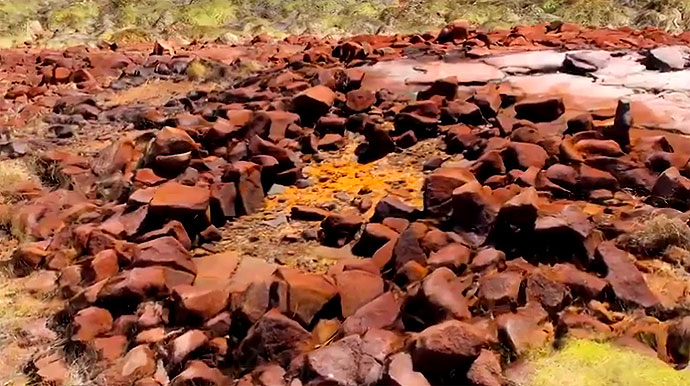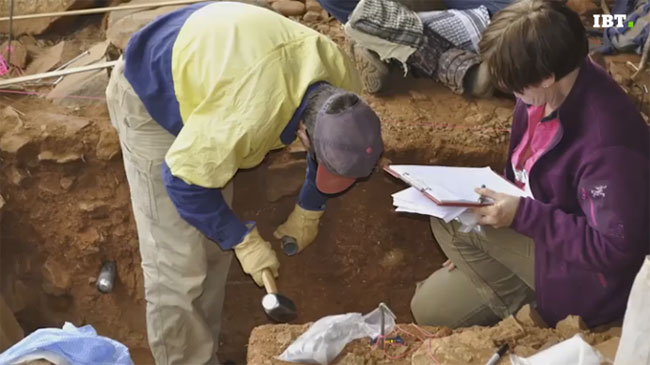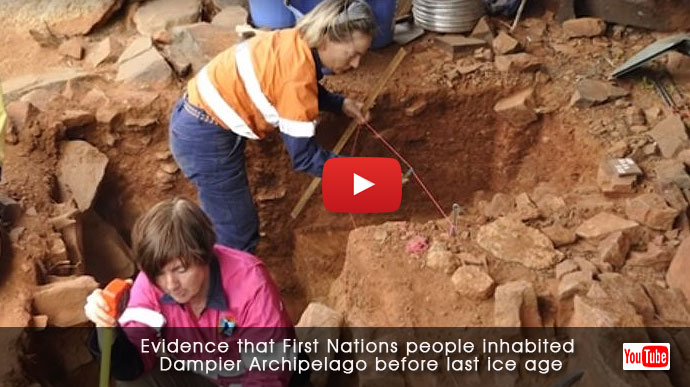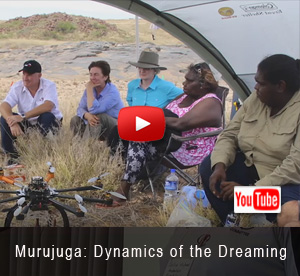Evidence of 9,000-year-old stone houses found on Pilbara island
Calla Wahlquist The Guardian 5 September 2016
Archeologists working on the Dampier archipelago off Australia’s north-west coast have found evidence of stone houses dating back 9,000 years – to the end of the last ice age – building the case for the area to get a world heritage listing.
Research Impact Story
Circular stone foundations were discovered on Rosemary Island, the outermost of 42 islands that make up the archipelago. The islands and the nearby Burrup peninsula are known as Murujuga – a word meaning “hip bones sticking out” – in the language of the Ngarluma people.
Prof Jo Mcdonald, director of the centre for rock art research and management at the University of Western Australia, said the excavations showed occupation was maintained throughout the ice age and the period of rapid rise in sea levels that followed.
“Around 8,000 years ago, it would have been on the coast,” McDonald told Guardian Australia. “This is the time that the islands were starting to be cut off and it’s a time when people were starting to rearrange themselves.”
The sea level on Australia’s north-west coast rose 130 metres after the end of the ice age, at a rate of about a metre every five to 10 years. “In people’s lifetimes they would have seen loss of territory and would have had to renegotiate – a bit like Miami these days,” McDonald said.
The placement of the stone structures indicated how that sudden space restriction was managed, she said. “The development of housing is really significant in terms of understanding how people actually divided up their space and lived in close proximity to each other in times of environmental stress.”
Research done in the past 12 months had found evidence of human occupation in Murujuga dating back 21,000 years, or before the last ice age, said McDonald.
Earlier research on Barrow Island, about 100km west, found evidence of human occupation dating back 50,000 years.

A stone settlement discovered on Dampier Archipelago (University of Western Australia)
McDonald said the latest discovery helped build the case for the area to gain a world heritage listing.
The Western Australian government is facing increased pressure to support a world heritage application for the area, which has been on the national heritage register since 2007.
It was assessed as meeting Unesco’s six world heritage criteria in 2011 but a formal nomination cannot be made without the support of the state government. The premier, Colin Barnett, said last month that the area would “probably be a world heritage site at some stage”.
“Our responsibility now is to protect these rock carvings and also make it possible for people to come and see this extraordinary place,” he said.
There are 2,500 registered Aboriginal heritage sites on the Burrup peninsula and surrounding islands, which are located near Karratha, 1,525km north of Perth.
The area is also home to the US$2bn North West Shelf gas project, the largest oil and gas development in Australia.
The entry to the largest heritage site, a valley containing close to a million rock carvings dating back 40,000 years, is within a kilometre of a fertiliser plant. Last year the WA government removed a large umbrella heritage listing for the peninsula because it complicated development applications.
The research done by McDonald and her team was co-funded by Rio Tinto, which has a mining lease within the national heritage area, and Murujuga Aboriginal Corporation.
McDonald said the state heritage management had been “really hotchpotch” but that existing industry could be co-managed with a world heritage site, providing suitable buffers were put in place.
has been discovered on the Dampier Archipelago

Hannah Osborne International Business Times 5 September 2016
Evidence of stone houses dating back 9,000 years has been discovered on the Dampier Archipelago in Australia. A team of archaeologists found a huge rock shelter that was built between 8,000 and 9,000 years ago, along with artefacts indicating occupation of the area for far longer – as much as 21,000 years.
Dampier Archipelago is in the north west of Western Australia. Experts are currently working to have it designated as a world heritage site, having formed around 7,000 years ago when rising sea levels flooded the coastal plains. Before and during the last ice age, the coast would have been located 160km further out, making it a good spot for human occupation.
Jo McDonald, from the University of Western Australia, led the team that discovered the settlement. "Our works managed to find a rock shelter on the Dampier Archipelago which we've dated to during and before the last ice age, which is something we haven't managed to find on the Dampier Archipelago before," she said.
"We've excavated into the floor of that rock shelter and found artefacts right to the base of that location some of which are 21,000 years old, but also a whole series of artefacts that date to around 15,000 years ago – which is right in the middle of the ice age."
The rock settlement itself is described as "huge", spanning up to 30m on the surface. "Excavations ... have uncovered evidence of one of the earliest known domestic structures in Australia, dated between 8000 and 9000 years ago," McDonald said. "This is an astounding find and has not only enormous scientific significance but will be of great benefit to Aboriginal communities in the area, enhancing their connections to their deep past and cultural heritage."
While the current findings are preliminary, the team hopes further research will help them better understand human occupation of the Pilbara region – or Murujuga – where the Dampier Archipelago is located.
Researchers are now using 3D printing to help uncover rock art found at the site. "We anticipate that this extraordinary rock art estate will produce some spectacular insights into what life was really like in deep history," McDonald said. "The impact on the broader community will be increased awareness through what we find across one of the most outstanding cultural sites in Australia."
 Aboriginal Population plummeted during the last Age: Study
Aboriginal Population plummeted during the last Age: Study



